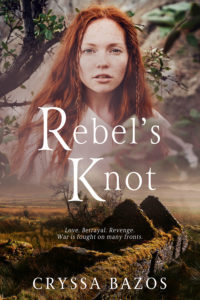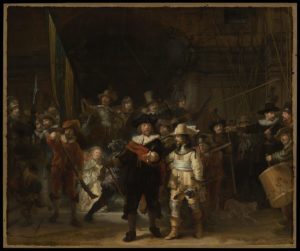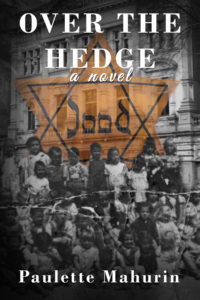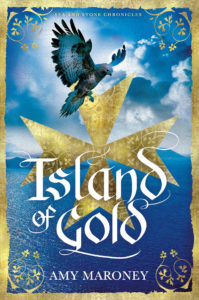Deborah Swift's Blog, page 15
November 19, 2021
Rebel’s Knot by Cryssa Bazos #CoffeePotBookClub #17thCentury
Review of Rebel’s Knot
I have already read the other two in this series, and was really keen to read the third as I knew I’d be in for a treat. What an adventure! The action never stops as the reader is whisked from one disaster to the next. Set in Ireland, in the turbulent aftermath of the English Civil Wars – the little known setting of the Eleven Years War, the historical research shines through. I loved the characters – Aine, an innocent caught up in a battle that is none of her own making, and Niall, a man intent on finding his lost sister Mairead and wreaking revenge on the cruel English who have destroyed his family. Niall is a warrior, ‘an extension of his weapons’ and a rebel against the marauding troops.
The novel explores Catholicism, Protestantism and the ‘old ways’ of fairy lore and legend, which underpin much of Irish culture and hold both sides together in a common understanding. Unfortunately, in a divided country the old myths are often not enough to prevent bloodshed, and Aine who claims to be non-political, and immune to difference, soon finds she has to take sides. Danger is everywhere – from the English leader the ruthless Garret, to Aine’s arch enemy from her past Muiredach. Prepare to be thoroughly gripped!
The love story in this book is beautifully handled and developed and is just as strong as the adventure. Another draw for the reader is the beautifully evoked Irish landscape of bog and heath, thatched cottages, campfires, and rebels’ hideouts. I can’t recommend this book highly enough and in fact all three books can stand alone and each one is a great historical read.
 About the Book
About the Book
A fey young woman, Áine Callaghan, is the sole survivor of an attack by English marauders. When Irish soldier Niall O’Coneill discovers his own kin slaughtered in the same massacre, he vows to hunt down the men responsible. He takes Áine under his protection and together they reach the safety of an encampment held by the Irish forces in Tipperary.
Hardly a safe haven, the camp is rife with danger and intrigue. Áine is a stranger with the old stories stirring on her tongue and rumours follow her everywhere. The English cut off support to the brigade, and a traitor undermines the Irish cause, turning Niall from hunter to hunted.
When someone from Áine’s past arrives, her secrets boil to the surface—and she must slay her demons once and for all.
As the web of violence and treachery grows, Áine and Niall find solace in each other’s arms—but can their love survive long-buried secrets and the darkness of vengeance?
BUY THE BOOK
Universal Amazon Link: http://mybook.to/RebelsKnot
Everywhere Else: https://books2read.com/RebelsKnot
Cryssa Bazos
Cryssa Bazos is an award-winning historical fiction author and a seventeenth century enthusiast. Her debut novel, Traitor’s Knot is the Medalist winner of the 2017 New Apple Award for Historical Fiction, a finalist for the 2018 EPIC eBook Awards for Historical Romance. Her second novel, Severed Knot, is a B.R.A.G Medallion Honoree and a finalist for the 2019 Chaucer Award. Website • Twitter • Facebook • Instagram • BookBub • Amazon Author Page • Goodreads
The post Rebel’s Knot by Cryssa Bazos #CoffeePotBookClub #17thCentury first appeared on Deborah Swift.November 7, 2021
New Release! Hidden Masterpiece (Soli Hansen Mysteries #3) by Heidi Eljarbo
I always love to spotlight a book set during the war years. This time it’s a dual timeline mystery set in Norway and 17th Century Amsterdam In this riveting third book in the Soli Hansen Mysteries series, a woman’s courage to follow her conviction during WW2 leads her to the portrait of a young Jewish heiress painted three centuries earlier.
Norway 1944.
Art historian Soli Hansen has gone undercover to rescue masterpieces and keep them from falling into the hands of Nazi thieves. Working with a small resistance group led by her best friend Heddy, Soli will stop at nothing to thwart the efforts of the invaders of their scenic country. Trust and loyalty mean everything when working against a merciless enemy.
Riddles and clues lead the way to a mysterious work of art. It’s a race against time, but Soli and her network refuse to give up. However, when news arrives that her sweetheart Nikolai is missing in action, Soli strives to concentrate on the demanding quest.
From the streets of Oslo to the snow-covered mountains and medieval churches of Nume Valley, Soli takes risks larger than her courage, trying to preserve and hide precious art. But she must decide if it’s all worth losing the man she loves.
Antwerp 1639.
Fabiola Ruber’s daughter, Annarosa, wants to honor her mother’s last wish and have her portrait done by a master artist who specializes in the art of chiaroscuro. Her uncle writes to an accomplished painter in Amsterdam and commissions him to paint his beloved niece.
Struggling with religious and social persecution, the Jewish Ruber family uproots once again and travels northward. On the way, they will sojourn in Amsterdam for Annarosa’s sitting in the master painter’s studio. But will they make it there? None of them can foresee the danger of such a journey.
Suspenseful action, riddles and mystery, enduring friendship, undying loyalty, and a tender love story come together in this dual timeline novel by bestselling author Heidi Eljarbo. Perfect for fans of Lucinda Riley, Kate Morton, Rhys Bowen, and Kate Quinn.

Amazon UK • Amazon US • Amazon CA • Amazon AU
Find Heidi here:
Website • Twitter • Facebook • LinkedIn • Instagram • Pinterest • BookBub • Amazon Author Page • Goodreads
The post New Release! Hidden Masterpiece (Soli Hansen Mysteries #3) by Heidi Eljarbo first appeared on Deborah Swift.Seventeenth Century Artists in ‘Hidden Masterpiece’ by Heidi Eljarbo #CoffeePotBookClub
 Today I welcome Heidi Eljarbo to my blog to tell us about the 17th Century artists featured in her new novel, Hidden Masterpiece. Over to Heidi!
Today I welcome Heidi Eljarbo to my blog to tell us about the 17th Century artists featured in her new novel, Hidden Masterpiece. Over to Heidi!
What a joy it is to write a novel about something I have a passion about.
Historical fiction is my favorite genre. What’s not to like? I spent my study years going to classes and pouring over books about the history of clothing, art history, and just history in general. I loved studying languages, too, and combined the two when I started writing novels.
The Soli Hansen Mysteries is a series about a young art historian who joins the resistance. But entwined with the WWII story are the seventeenth century chapters that follow the artists and models of the paintings our heroine tries to rescue in 1944. Hidden Masterpiece is the third novel in this series.
Renaissance and baroque paintings have always fascinated me. The artists’ development of technique, perspective, and realism changed the way art was done. I have given one particular master painter the position as the founder of the art technique chiaroscuro in these novels. His name was Michelangelo Merisi da Caravaggio, and he lived in Italy and Malta during the years 1571-1610.
[image error]The Taking of Christ by Caravaggio
The technique had been used earlier by a woodcutter in the 1500s, and Leonardo da Vinci found the contrast of light and shadow fascinating.
But Caravaggio is considered the most famous chiaroscuro artist. He darkened large portions of the background of the artwork and illuminated the subjects in the foreground. This technique was soon adopted by others. My novels in the series so far include Rubens and Rembrandt who were inspired by Caravaggio’s methods.
In Hidden Masterpiece, Rembrandt is an up-and-coming young artist in Amsterdam. His professionalism and amazing artistry draw a young woman to his studio. Annarosa has decided beforehand exactly how she wants her portrait done and has a good reason why Rembrandt is the right artist for the job. At this time, Rembrandt is working on a gigantic oil painting of the captain of the civic militia guard along with seventeen of his men. The plan is to hang it in their distinguished guild hall. The composition measures almost 3.65m x 4.26m and becomes the masterpiece we later know as The Night Watch; a priceless artwork safely guarded in the Rijksmuseum in Amsterdam.

But the masterpiece we become invested in, is Annarosa’s portrait.
Our heroine Soli explains, “Rembrandt often painted real people as he saw them and got into trouble for doing so. His clients wanted to take home lovely portraits of themselves, but they were sometimes disappointed when he’d painted them with scars, warts, wrinkles, and flaws. He did not romanticize the images.”
“So Annarosa’s stunning features and self-confident stare are most likely the true version of her?” Nikolai asked.
“I believe so.” Soli sighed. “Rembrandt left behind a vast number of paintings. Just think of his self-portraits…we know of eighty of them. And I’m not surprised he didn’t complete all his artworks. Unlike many of the Dutch masters of his time, he had a wide repertoire of paintings and etchings with different styles. I had an art teacher who said we should never compare anyone with Rembrandt.”
So come with me into the world of art, resistance, bravery, loyalty, and romance. Hidden Masterpiece has been a joy to write. I hope you’ll enjoy it, too.
READ MY REVIEW of Book One in this series – ‘Of Darkness and Light.
Find Heidi at her Website • Twitter • Facebook
BUY THE BOOK : Amazon UK • Amazon US • Amazon CA • Amazon AU
The post Seventeenth Century Artists in ‘Hidden Masterpiece’ by Heidi Eljarbo #CoffeePotBookClub first appeared on Deborah Swift.November 1, 2021
Seadogs and Criminals – a #Victorian adventure by Alex Fisher
 I’m delighted to welcome Alex Fisher to my blog today to tell me all about his new novel, Seadogs and Criminals. Over to Alex:
I’m delighted to welcome Alex Fisher to my blog today to tell me all about his new novel, Seadogs and Criminals. Over to Alex:
Seadogs and Criminals is a historical fiction adventure that begins in the winding cobbled streets of Victorian London and is set amid the booming social and technological spike known as the Industrial Revolution. Due to a widespread revolution in factories and an influx of work, people of rural settings left their country background to settle in the city, making the urban population explode like never before. This, of course, affected the social classes, widening the gap between rich and poor leading the poverty-stricken to spend their lives in workhouses, or leading those desperate enough to crime in order to make ends meet.
Within Seadogs and Criminals, I designed a character who did not play strictly by those rules, who did not have to be desperate in order to break laws. He did it because he loved to. He loved the thrill and the chase, the greed and the reputation – he became a master criminal, evading the law for years by leaving a trademark: nothing, earning him the nickname of Trace – because he never left one.
The Ruse of the Reversible Jacket
The main protagonist of Seadogs and Criminals is Joseph Winter, born and bred into the lower classes upon the streets of Victorian London. An intriguing character, he always seemed conflicted; loving and hating the streets simultaneously, just as he loved and hated his reputation, just as he loved and hated himself. Literate, skilled and quick-thinking, he knew he could’ve had the option to get an honest job, but he didn’t. Crime was his career, and he was excellent at it. With light feet, swift hands and a special jacket, he was always able to evade the peelers of London. Specially tailored and a perfect object to represent his fickle and mischievous nature, this jacket was reversible – giving the appearance of a lowly vagabond on one side, but once the police had lost him amongst the crowd, he reversed it to an expensive-looking coat complete with pocket square and felt collar. A quick comb of the hair and a brush down was all that was needed in order to make him disappear from the police and become untouchable.
Within these cobbled rat-runs appearances were everything. By switching social classes and becoming a wealthy businessman, Winter was respected and left alone. A vital object to uphold a vital reputation. Yet he tired of the constant pursuit and longed for something more. It was greed that fueled his desire to keep in the game and to take on the one last job from his long-term friend and confidant Vincent “Mad Vinny” Jenkins. It was a burglary in a wealthy house supposedly keeping a treasure map leading to the fabled Lost Loot, or otherwise known as Scott’s Trove. A treasure lost to history, buried by the mysterious Eve and Henry Scott a hundred years before; a myth to some, a legend to others. It was too good to miss.

Photo by Ylanite Koppens from Pexels
The Heirloom Compass
Upon discovering said map, however, Joseph realised its mystery was doubled even more so since the map was encoded within a poem-like riddle. An object that was to become crucial to the story, one of the pillars supporting the plot. Along with the map, bewildering him further, was the compass left to him by his grandfather Frederick Winter; an explorer who sailed upon the Endeavour with Captain James Cook, who became a legend in himself through his travels, but who returned a man with a loss of spirit and morals. This compass became a poignant object for the developing story of Seadogs and Criminals, linking Joseph to his past but also giving him a direction to the future, (possessing an importance that even I did not anticipate when I began writing the story). This compass became even more necessary when Joseph, along with a group of interesting characters, stowaway upon a merchant sailing ship and journey far and wide to find the next clue. He didn’t want to leave his beloved London, but after fate dealt him a bitter blow, he had to get away. He had to leave and had to find out what life had to offer. Plus, who could deny the call of adventure when a treasure map was inviting him on one.
Seadogs and Criminals was a thrill to write and has influenced my life in more ways than I could’ve imagined. A gripping tale, I hope it will hook the
reader in until the end so they, too, can uncover the legend and unravel the mysteries and will get to know the characters as much as I did.

The post Seadogs and Criminals – a #Victorian adventure by Alex Fisher first appeared on Deborah Swift.
October 20, 2021
Traitors Knot by Cryssa Bazos – Read an Excerpt #CoffeePotBookClub #GreatReads
Today I’m hosting an excerpt from the wonderful novel Traitor’s Knot by Cryssa Bazos.
I’ve already read this book, and Severed Knot, the one that follows it, and I’m halfway through Rebel’s Knot, the last in the series. All three books are immaculately researched, gripping and well-worth anyone’s money. Do start with this excerpt to get a flavour of the treats to come:
Traitor’s Knot , by Cryssa Bazos – Excerpt
Elizabeth pushed through the knot of women pressing to take her place at the stall. “Excuse me,” she gasped, and they cleared the way for her and the ugly yellow ribbon.
Just as she reached the last matron, a demon in the form of a Puritan Roundhead materialised in her path.
“Good morning, my dear,” Hammond drawled.
She pressed her hand to her chest. “Lieutenant—you surprised me.”
“A pleasant one, I trust,” he said. “I’m glad I found you. There is something I thought you might find of interest.” Without waiting for a reply, he took her by the elbow and led her away from the haberdasher’s stall. “A godly woman does not gild herself with laces and frills.”
Elizabeth’s expression hardened. She had every right to visit any shop she desired. Next he would criticise her for frequenting the bookseller’s. Would they hang her for choking a constable with a mustard-coloured ribbon?
“I would lower your voice, Lieutenant. Mistress Rathbone will not thank you for your comments.”
Hammond led her to the draper’s with bolts of broadcloth laid out in display—various shades of grey, charcoal, black and mud brown. He held up a corner of the wool. “Plain, simple fabrics—these are pleasing to the Lord. We must not draw attention to our corrupt body.”
“And what of your russet feathers, Lieutenant?” Elizabeth pointed to his coat. “Methinks that this colour draws sufficient attention to the material world.”
Rather than take offence, he smiled. “A banner for the godly. My lord Cromwell has seen fit to garb us in this fashion. Come.”
Hammond led her away, but to her relief, he did not head for the Chequer. “I should tell you that I’m leaving Warwick for apace.”
Elizabeth choked down her excitement. “Indeed? The town will not be the same. Are you returning to London? I recall that you missed it keenly.”
“Nothing of the sort,” he said. “I shan’t be leaving the county. Sir Richard has entrusted me to oversee a particularly delicate enterprise.”
Elizabeth’s instincts prickled. This sounded ominous, and anything that made Hammond look smug as a cat in cream could not be good. She feared it might have something to do with James. “Might I enquire as to the nature of this business, Lieutenant? I hope it shan’t be a dangerous enterprise?”
“Your concern warms me a great deal, my dear.”
The softening in his expression made Elizabeth squirm. She hated to encourage the man, but if it could protect James . . .
“Unfortunately, I’m not at liberty to explain,” Hammond said. “Suffice it to say that if we are successful, a mortal blow will be struck to the Commonwealth’s enemies.”
Elizabeth’s worry increased. The only enemy to the Commonwealth that she knew had stolen her heart. She had to warn James. “I wish you joy in your mission, Lieutenant. I must take my leave of you. My aunt wasn’t feeling well this day, and I’m anxious to return to her side.”
“But you haven’t seen my treat.”
“A treat?” The hairs on the back of her neck lifted.
Hammond led her down a side street lined by a row of town houses and away from the din of the market. A waiting company of dragoons clustered around the glover’s house. Hammond watched her as though savouring her reaction.
“Why are we here?”
“I promised you something of interest.”
One of the dragoons presented himself to Hammond. “Everything is secure inside, Lieutenant.”
“Very good.” Hammond looked around. “And the wagon?” Before the man could answer, a conveyance with thick bars turned the corner and rumbled to a halt before the house. “Excellent timing.”
“Why is the gaol cart here?” Elizabeth asked.
“Patience is a virtue, mistress.”
A piercing shriek and shattering glass broke the expectant hush. Barked commands drowned out a series of angry shouts. The front door flew open, and a pair of dragoons burst from the house dragging a young woman. Tears streamed down her face, and she clutched a sheet to cover her nakedness as the soldiers marched her to the cart. Elizabeth recognised her as the glover’s maid.
The woman stumbled and spilled to the sidewalk, exposing small, quivering breasts. “Please!” she cried as they hauled her to her feet.
Shocked, Elizabeth watched them push the naked woman into the wagon. One of the soldiers tossed the sheet back to her.
Next the dragoons marched out the second prisoner—the glover. The man stumbled out of his home, clad only in a shirt. The garment barely covered his naked loins. Normally fond of gawking at the young maids, he no longer leered.
“Distressing, isn’t it?” Hammond said.
Elizabeth started. “What—?”
“Adultery and fornication,” he replied. “They will spend time in the arms of the stocks. We must prepare to don the mantle of the New Jerusalem. There is no room for heretics and the ungodly in this new order.”
Elizabeth’s stomach turned. By now, a small crowd had flooded in from the market. A few of the bolder men hovered near the wagon to get a good look at the prisoners. Laughter and jeering rippled through the crowd. Elizabeth found it difficult to watch. “What of mercy?”
“Mercy? Would that please you?” Hammond’s smile widened. “I have shown them mercy. Had we arrested them in another fortnight, they’d both be in the gaol.”
TRAITOR”S KNOT: England 1650: Civil War has given way to an uneasy peace . . .
Royalist officer James Hart refuses to accept the tyranny of the new government after the execution of King Charles I, and to raise funds for the restoration of the king’s son, he takes to the road as a highwayman.
Elizabeth Seton has long been shunned for being a traitor’s daughter. In the midst of the new order, she risks her life by sheltering fugitives from Parliament in a garrison town. But her attempts to rebuild her life are threatened, first by her own sense of injustice, then by falling in love with an outlaw.
The lovers’ loyalty is tested through war, defeat and separation. James must fight his way back to the woman he loves, while Elizabeth will do anything to save him, even if it means sacrificing herself.
BUY NOW Amazon UK • Amazon US • Amazon CA • Amazon AU • Barnes & Noble • Kobo
My Review of Traitor’s Knot:
5.0 out of 5 stars Great blend of fact and fictionThis is a wonderful novel – richly detailed and full of the jargon and phraseology of the period. Set just as Prince Charles (later to be Charles II) is making his escape during the English Civil Wars, it centres around the difficult choices and strained allegiances that marked the tension of the Interregnum.James Hart, a highwayman, (modelled on the real-life Royalist highwaymen of the day such as Hind) is defying Cromwell’s Oath of Allegiance, and making his own rules by not only robbing the rich to feed the poor, but by continuing to support the Crown against the Commonwealth. He falls for Elizabeth Seton, a herbalist and healer, who has chosen to leave her family for a distant aunt, rather than be condemned to life in her sister’s staunchly Puritanical household. When the two characters meet, they find they have much in common, and the romance soon grows wings. Elizabeth’s aunt is a supporter of the Knot, a fictional organisation that gives safe houses to Catholic recusants, and Elizabeth is drawn into helping them. However, The King needs James’s assistance, and our highwayman hero must leave Elizabeth prey to another suitor – the preacher who will show no mercy if he were to uncover a royalist, and a woman who supports papists, in their midst.
Cryssa Bazos is equally at home writing battle scenes as writing romance, and the pace keeps the reader turning the pages. The book is chock-full of historical facts, and these are seamlessly woven into the plot. Fans of English Civil War fiction will lap this up, and it would also suit readers who enjoy classic historical fiction by for example Kathleen Winsor, Georgette Heyer, or Pamela Belle as well as the thrillers of Michael Arnold.
About Cryssa Bazos
Cryssa Bazos is an award-winning historical fiction author and a seventeenth century enthusiast. Her debut novel, Traitor’s Knot is the Medalist winner of the 2017 New Apple Award for Historical Fiction, a finalist for the 2018 EPIC eBook Awards for Historical Romance. Her second novel, Severed Knot, is a B.R.A.G Medallion Honoree and a finalist for the 2019 Chaucer Award. A forthcoming third book in the standalone series, Rebel’s Knot, will be published November 2021.

Get in touch with Cryssa : Website • Twitter • Facebook • Instagram • BookBub • Amazon Author Page • Goodreads
Keep an eye out on this blog for my review of Rebel’s Knot – coming very soon!
The post Traitors Knot by Cryssa Bazos – Read an Excerpt #CoffeePotBookClub #GreatReads first appeared on Deborah Swift.October 17, 2021
Spotlight on ‘Widdershins’ by Helen Steadman #audiobook #17thCentury
The new audio book of Widdershins is narrated brilliantly by talented actor, Christine Mackie, from Downton Abbey and Coronation Street.
The first part of a two-part series, Widdershins is inspired by the Newcastle witch trials, where 16 people were hanged. Despite being the largest mass execution of witches on a single day in England, these trials are not widely known about. In August 1650, 15 women and one man were hanged as witches after a Scottish witchfinder found them guilty of consorting with the devil. This notorious man was hired by the Puritan authorities in response to a petition from the Newcastle townsfolk who wanted to be rid of their witches.
[image error]
Widdershins is told through the eyes of Jane Chandler, a young woman accused of witchcraft, and John Sharpe, the witchfinder who condemns her to death. Jane Chandler is an apprentice healer. From childhood, she and her mother have used herbs to cure the sick. But Jane soon learns that her sheltered life in a small village is not safe from the troubles of the wider world. From his father’s beatings to his uncle’s raging sermons, John Sharpe is beset by bad fortune. Fighting through personal tragedy, he finds his purpose: to become a witchfinder and save innocents from the scourge of witchcraft.
Praise for Widdershins:
The Historical Novel Society said of Widdershins: “Impeccably written, full of herbal lore and the clash of ignorance and prejudice against common sense, as well as the abounding beauty of nature, it made for a great read. There are plenty of books, both fact and fiction, available about the witch-trial era, but not only did I not know about such trials in Newcastle, I have not read a novel that so painstakingly and vividly evokes both the fear and joy of living at that time.”
BUY THE BOOK
Helen Steadman
Dr Helen Steadman is a historical novelist. Her first novel, Widdershins and its sequel, Sunwise were inspired by the Newcastle witch trials. Her third novel, The Running Wolf was inspired by a group of Lutheran swordmakers who defected from Germany to England in 1687.
Despite the Newcastle witch trials being the largest mass execution of witches on a single day in England, they are not widely known about. Helen is particularly interested in revealing hidden histories and she is a thorough researcher who goes to great lengths in pursuit of historical accuracy. To get under the skin of the cunning women in Widdershins and Sunwise, Helen trained in herbalism and learned how to identify, grow and harvest plants and then made herbal medicines from bark, seeds, flowers and berries.
The Running Wolf is the story of a group of master swordmakers who left Solingen, Germany and moved to Shotley Bridge, England in 1687. As well as carrying out in-depth archive research and visiting forges in Solingen to bring her story to life, Helen also undertook blacksmith training, which culminated in making her own sword. During her archive research, Helen uncovered a lot of new material and she published her findings in the Northern History journal.
 Helen is now working on her fourth novel.
Helen is now working on her fourth novel.
Get in touch with Helen:
Twitter @hsteadman1650
Website: https://helensteadman.com/
The post Spotlight on ‘Widdershins’ by Helen Steadman #audiobook #17thCentury first appeared on Deborah Swift.October 4, 2021
Darjeeling Inheritance by Liz Harris #Review #CoffeePotBookClub
Darjeeling, 1930
After eleven years in school in England, Charlotte Lawrence returns to Sundar, the tea plantation owned by her family, and finds an empty house. She learns that her beloved father died a couple of days earlier and that he left her his estate. She learns also that it was his wish that she marry Andrew McAllister, the good-looking younger son from a neighbouring plantation.
Unwilling to commit to a wedding for which she doesn’t feel ready, Charlotte pleads with Dan Fitzgerald, the assistant manager of Sundar, to teach her how to run the plantation while she gets to know Andrew. Although reluctant as he knew that a woman would never be accepted as manager by the local merchants and workers, Dan agrees.
Charlotte’s chaperone on the journey from England, Ada Eastman, who during the long voyage, has become a friend, has journeyed to Darjeeling to marry Harry Banning, the owner of a neighbouring tea garden.
When Ada marries Harry, she’s determined to be a loyal and faithful wife. And to be a good friend to Charlotte. And nothing, but nothing, was going to stand in the way of that.
Review
I thoroughly enjoyed this romantic adventure in Colonial India. Liz Harris is able to conjure the sights and sounds of Darjeeling in the 1930s with skill and accuracy. This includes the fact that during Colonial rule, the British in general treated the Indian population as their servants and as second class citizens, and even though individuals might have treated the Indian people they knew with kindness and respect, the accuracy of this depiction provides the reader with food for thought. The main thrust of the book is the developing romance between Charlotte and Andrew MacAllister who she is persuaded to marry after inheriting the tea plantation because their estates are next to each other and it is considered unsuitable in that era for a lone woman to be in business. Andrew is handsome, well-connected, and his estate is only second to her own. Charlotte is being pushed into marriage by her mother, but she wants to wait, and we suspect Andrew also has his reasons to delay. But will Andrew turn out to be everything she hoped? Of course there is also Dan Fitzgerald, the good-hearted plantation manager, who teaches Charlotte everything she needs to know about growing tea (and in the process educates the reader). In amongst these developing and intertwining friendships is also the treachery of Charlotte’s best friend Ada to add spice to the story. This is a novel with wonderful descriptions and a fast moving plot that has everything you could hope for in this kind of romance. I highly recommend it for your holiday reading and I’m looking forward to the other books in the series. Website • Twitter • Facebook • Amazon Author Page
Website • Twitter • Facebook • Amazon Author Page
The post Darjeeling Inheritance by Liz Harris #Review #CoffeePotBookClub first appeared on Deborah Swift.
September 29, 2021
New Release! A Strand of Gold by Elisabeth Conway #HistFic #Singapore #Review
Singapore 1822: a place tainted by exploitation and dishonesty.
This is the world into which Chin Ming disappears, powerless to discover what happened to her missing father and unable to deliver his letter to Stamford Raffles, the founder of modern Singapore.
This story begins beside the harbour in Guangzhou, where Chin Ming is plotting to board a junk. On the same ship is Wing Yee, a high-class courtesan, anticipating a brighter future. During the voyage they form a friendship, but when they reach Singapore, they become embroiled in the attitudes and values of the times. They are subjected to the very worst of human nature in a male-dominated world. The opportunities they dreamt of in Singapore are shattered when they are imprisoned, firstly by a Chinese merchant, and then by a devious European trader.
In Elisabeth Conway’s A Strand of Gold we experience a world where slavery is tolerated, gambling and prostitution are rife, and all of this is set against a background of Raffles’ idealism and East India Company bureaucracy.

Review
This is a novel firmly rooted in the historical truth of the times and features slavery, sexual exploitation and a society ravaged by corruption and misogyny. Having said that, this is not at all a depressing novel. Chin Ming is a very likeable heroine, one with courage and a determination to survive and find her lost father. The friendship between Chin Ming and the more worldly courtesan Wing Yee is sensitively drawn, and I liked both of these women and was rooting for their survival.
The real-life characters of Raffles and his adopted son Dick, are seamlessly woven into the narrative, and the reader learns a lot about how Singapore was planned and built, and about native customs, and the flora and fauna of the area. In this context Raffles is a somewhat naive idealist, who wants to expand his utopia, but we also see the grasping nature of trade which threatens his ideals. Trade with China in goods such as Opium affects all the dealings in Singapore, as does the Dutch stranglehold on trade. Elisabeth Conway clearly has a great knowledge of Singapore and its history and its a pleasure to read a book featuring this unusual setting. For anyone interested in Asian culture and particularly the history of Singapore, this book is a rare treat and warmly recommended.
Watch and hear an extract https://www.youtube.com/watch?v=DeSyfwkp8ys
Find Elisabeth at her website where you can read more about the history of Singapore : https://elisabethconway.com/
On Twitter: @LisaLisa2613
A Strand of Gold is published by Atmosphere Press
The post New Release! A Strand of Gold by Elisabeth Conway #HistFic #Singapore #Review first appeared on Deborah Swift.September 26, 2021
Over the Hedge by Paulette Mahurin #WW2 #CoffeePotBookClub
I’m delighted to spotlight the WW2 novel ‘Over the Hedge’ by Paulette Mahurin today.
What’s it about?
Netherlands 1943
During one of the darkest times in history, at the height of the German occupation of the Netherlands in 1943, members of the Dutch resistance began a mission to rescue Jewish children from the deportation center in Amsterdam. Heading the mission were Walter Süskind, a German Jew living in the Netherlands, Henriëtte Pimentel, a Sephardic Jew, and Johan van Hulst, principal of a Christian college.
As Nazis rounded up Jewish families at gunpoint, the three discreetly moved children from the deportation center to the daycare across the street and over the backyard hedge to the college next door. From the college, the children were transported to live with Dutch families. Working against irate orders from Hitler to rid the Netherlands of all Jews and increasing Nazi hostilities on the Resistance, the trio worked tirelessly to overcome barriers. Ingenious plans were implemented to remove children’s names from the registry of captured Jews; to sneak them out of the college undetected past guards patrolling the deportation center, and to meld them in with their new families to avoid detection.
Based on actual events, Over the Hedge is the story of how against escalating Nazi brutality when millions of Jews were disposed of in camps, Walter Süskind, Henriëtte Pimentel, and Johan van Hulst worked heroically with the Dutch resistance to save Jewish children. But it is not just a story of their courageous endeavors. It is a story of the resilience of the human spirit. Of friendship and selfless love. The love that continues on in the hearts of over six hundred Dutch Jewish children.
 About Paulette:
About Paulette:
Paulette Mahurin is an international bestselling novelist. She lives with her husband Terry and two dogs, Max and Bella, in Ventura County, California. She grew up in West Los Angeles and attended UCLA, where she received a Master’s Degree in Science.
Her first novel, The Persecution of Mildred Dunlap, made it to Amazon bestseller lists and won awards, including best historical fiction 2012 in Turning the Pages Magazine. The Seven Year Dress, made it to the bestseller lists for literary fiction and historical fiction on Amazon U.S., Amazon U.K. and Amazon Australia. Her new release, Over the Hedge, was #1 in Hot New Release Amazon U.K. it’s second day out.
Follow Paulette on Twitter @MahurinPaulette
The post Over the Hedge by Paulette Mahurin #WW2 #CoffeePotBookClub first appeared on Deborah Swift.September 17, 2021
Island of Gold by Amy Maroney #CoffeePotBookClub #historicalfiction
When Cédric is recruited by the Knights Hospitaller to the Greek island of Rhodes, his wife Sophie jumps at the chance to improve their fortunes. After a harrowing journey to Rhodes, Cédric plunges into the world of the knights—while Sophie is tempted by the endless riches that flow into the bustling harbor. But their dazzling new home has a dark side.
Slaves toil endlessly to fortify the city walls, and rumors of a coming attack by the Ottoman Turks swirl in the streets. Desperate to gain favor with the knights and secure his position, Cédric navigates a treacherous world of shadowy alliances. Meanwhile, Sophie secretly engineers a bold plan to keep their children safe. As the trust between them frays, enemies close in—and when disaster strikes the island, the dangers of their new world become terrifyingly real.
With this richly-told story of adventure, treachery, and the redeeming power of love, Amy Maroney brings a mesmerizing and forgotten world to vivid life.

Review
This is a beautifully written novel set in 15th Century France and on the island of Rhodes, during the time when Turkey And Greece were battling over territory. Initially this is a romance, between Cedric, a young nobleman and falconer, and Sophie the daughter of a rich merchant, but a commoner. The romance is tenderly drawn and we get wonderful portraits of both lead characters – of their hopes and desires for the future, and of the way their different upbringings have affected their lives. Cedric is a man who can handle himself in battles against bandits or ecorcheurs, he is used to travelling, being on the road and his freedom. Sophie on the other hand has been brought up by a doting father to be spoilt and to enjoy the luxuries of a wealthy household. Naturally their eventual marriage runs into many difficulties, none more so than when they take ship for Rhodes.
From here, the novel becomes more of an adventure, and we begin to learn more about the Knights Hospitaller of St John who were fighting to maintain a stronghold against Muslim forces. Not only this, but the traffic of slaves, and piracy and corruption bedevil the island. In defending a woman, Cedric kills an enemy, thus rousing the ire of his supporters. Cedric has to deal with the treachery of men he trusted, and all the time a deadly plague is raging. There is a lot going on, all set against the mythic background of the old Greek religion and the newer Catholicism and Islam, in a battle for supremacy.
This is a novel rich in detail, from how to train and raise gyrfalcons, to making certain sorts of dye, to the use of ‘dragon’s blood’ in medicine, to the running of the Grand Order of the Knights. As a reader I love to be immersed in a different time and place, especially one that is unfamiliar. This is a fantastic novel with something for everyone, and I’m sure it will prove very popular with historical fiction fans, even if they have no knowledge whatsoever of the period. Once you’ve started it, you won’t want to put it down, and it comes highly recommended from this picky reader.
Amy Maroney lives in the Pacific Northwest with her family, and spent many years as a writer and editor of nonfiction before turning her hand to historical fiction. When she’s not diving down research rabbit holes, she enjoys hiking, dancing, traveling, and reading. Amy is the author of the Miramonde Series, a trilogy about a Renaissance-era female artist and the modern-day scholar on her trail.
Twitter: twitter.com/wilaroney Facebook: www.facebook.com/amymaroneyauthor Instagram: www.instagram.com/amymaroneywrites/
The post Island of Gold by Amy Maroney #CoffeePotBookClub #historicalfiction first appeared on Deborah Swift.



